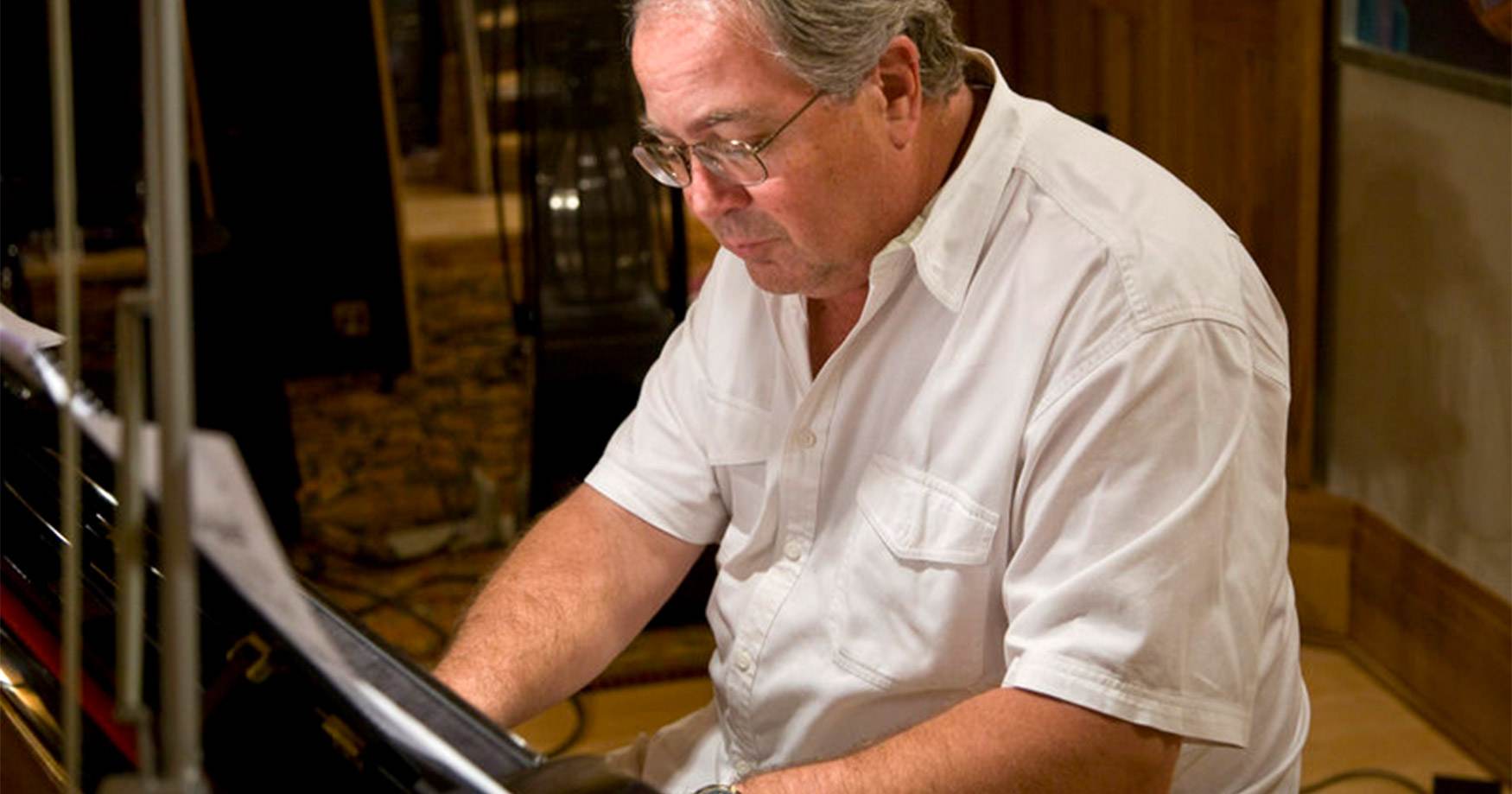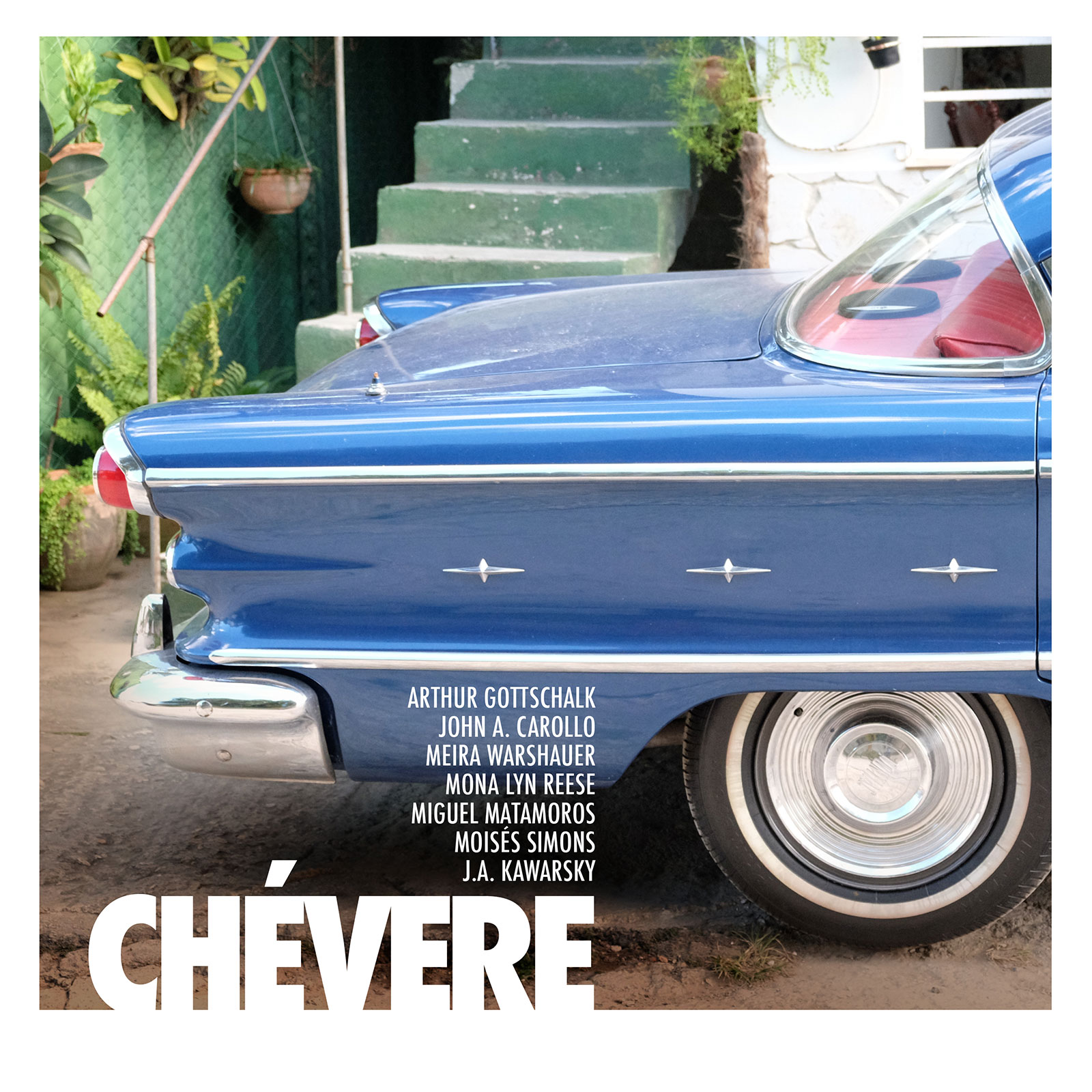
Art Gottschalk, a longtime friend of PARMA and previously released on MODES, REQUIEM FOR THE LIVING, and MOTO PERPETUO, is an award-winning composer whose work has been described as “fascinatingly strange” by BBC. Gottschalk’s next release is on the compilation album CHÉVERE, featuring his piece Imagenes de Cuba, which was performed by PARMA artists Apollo Chamber Players as part of their 20×2020 campaign. Today, Gottschalk is our next featured artist in “The Inside Story,” a blog series exploring the inner workings and personalities of our artists. Read on to see where Gottschalk is most creative.
Who was your first favorite artist(s) growing up?
I grew up in a household where Stravinsky and Bartok, Stan Kenton and the Thad Jones Mel Lewis Band, Debussy, and Beethoven, were heard daily on my father’s beloved stereo system. He would often accompany the recordings by himself on trumpet, playing by ear and improvising to his heart’s content. So I was lucky that way but felt luckier still when, at the New York Public Library, I discovered the music of Charles Mingus, Cecil Taylor, Sun Ra, Eric Dolphy, and Anthony Braxton. It wasn’t until I entered medical school at the University of Michigan, where I began to take composition lessons (I’d been composing as an autodidact since the age of 12), that I learned that these composers were considered popular artists, and other models were held up to me as pure artists: Krystof Penderecki, Roger Sessions, Milton Babbitt, Pierre Boulez, et al. It wasn’t until I entered music school, and began studies with William Bolcom, that I came to realize that my original instincts were correct. Since then, I have made little or no distinction between music based upon their style, but only upon their content, weight, and meaning. Epitaph, by Charles Mingus (completed posthumously by Gunther Schuller), may be one of the greatest and uniquely American works of music from the Twentieth Century; unfortunately, few musicians are even aware of its existence.
What is your guilty pleasure?
I have many guilty pleasures, including one that I take great delight in sharing with PARMA CEO Bob Lord. I’ll let him reveal that one if he cares to. But I also confess to being a voracious and omnivorous reader, and take great pleasure in consuming books of hard-boiled detective fiction, everyone from Phillip Marlowe and Sam Spade to Jack Reacher and Myron Bolitar. Beyond that, I love to stink up the golf course with my characteristically awful play and to attend public screenings of old films. I also enjoy the music of Dick Dale and The Del-Tones. And the cartoon artistry of Pinkie and The Brain. And Wallace and Gromit.
If you could spend creative time anywhere in the world, where would it be? And why?
If the weather is cool, and if I am within sight, sound, and smell of the sea, I am at my happiest, and when I am at my happiest I feel best about composing. I have always composed during bad patches in my life, and some of my best work has come from such times, but I don’t ever think that emotional turmoil or poor circumstances are a good incubator for ideas; I feel that I’ve composed well despite such circumstances. I much prefer, as I said, good weather and being seaside. Some places where I’ve worked and that match that description includes Bogliasco, Italy, Antibes, France, and New York. And, during those very few days when the weather is decent, usually, in the dead of what passes here for Winter, Houston has been a good base of operations, nestled, as it is, on the Gulf of Mexico.
Is there a specific feeling you want listeners to tune into when hearing your work?
Manisero is the first movement of a three-movement work for string quartet, called Imágenes de Cuba (Images of Cuba), and is based on the popular tune known in English as The Peanut Vendor. It is usually played as a brilliant, flashy, happy-go-lucky and often comedic portrait of Latin culture and peoples. And it is certainly a good tune for that. But I have seen the men and ladies who sell the slim paper cones of roasted peanuts to tourists in the squares in the cities of Cuba. They are invariably the darkest hued of the kaleidoscopic riot of colors one finds in the Cuban people, and just as invariably, the poorest. They cry the ancient cry – “Mani” (peanuts), – and sing the ancient street vendors’ song. My use of it is an attempt to depict the resilience of the Cuban people, whom I have come to admire greatly. Listen to how, no matter how many times the tune dissolves or is battered apart, the little rhythm just dusts itself off and continues on its way, singing its little song, living its life. That is the gift, and the lesson, of the Cuban people.
What would you say to an artist performing your work that nobody else knows?
I don’t know that nobody else knows, for goodness’ sake, but I do want performers to be aware of the limitations of musical notation. I try my best, within those limitations, to express the sound that I hear in my inner ear and wish to capture. But I am generally hearing an ideal performance, meaning I am hearing the work of an ideal performer in my head. I cannot capture every nuance of that ideal person’s performance, but I do try hard enough that I ask the “real” performer to first master the notes, rhythms, dynamics, and articulations as I’ve written them. But then, and only then, I really want them to transcend the written page, and make the music sound as if were theirs, that it is perfectly natural that they should be playing these sounds and that they wish to share them with their audience. In other words, learn the music strictly as written so that they can then play it as if it had never been written down to be learned.
What would you say to an artist performing your work that nobody else knows?
I don’t know that nobody else knows, for goodness’ sake, but I do want performers to be aware of the limitations of musical notation. I try my best, within those limitations, to express the sound that I hear in my inner ear and wish to capture. But I am generally hearing an ideal performance, meaning I am hearing the work of an ideal performer in my head. I cannot capture every nuance of that ideal person’s performance, but I do try hard enough that I ask the “real” performer to first master the notes, rhythms, dynamics, and articulations as I’ve written them. But then, and only then, I really want them to transcend the written page, and make the music sound as if were theirs, that it is perfectly natural that they should be playing these sounds and that they wish to share them with their audience. In other words, learn the music strictly as written so that they can then play it as if it had never been written down to be learned.
What does this album mean to you personally?
All my recordings represent an opportunity to share my musical thoughts and ideas with people with whom I might not otherwise be able to do so. To me, art is an essential communication, and the only way I can gauge the success or merit of my attempt at communication is to reach as wide and diverse a population as is possible. Recording represents that means and, imperfect as it is, remains the most effective means. Other than that, this album reminds me of one of the many visits I’ve made to Cuba over the past decade, and the wonderful time I had in Havana working with the producer, engineer, and musicians at the studio on this session. ¡Viva Cuba, Cuba Libre!

A man whose music has been described as “infectious , loud, and fun” (Gramophone Magazine), and “fascinatingly strange” (BBC Music Magazine), award-winning composer Arthur Gottschalk is Professor of Music Composition at Rice University’s Shepherd School of Music. His music is regularly performed domestically and overseas, and his works are recorded and distributed on Navona Recordings, New Ariel, Crystal Records, Summit, Capstone, Beauport Classical, ERMMedia, AURecordings, Golden Crest, MSR Classics, Ablaze Records, Naxos, Amirani (Italy), and Delage (France). His works are published by Subito Music, Shawnee Press, European American Music Distributors, Alea Publishing, Trevco Music, The International Horn Society, Potenza Music, Delage Musique, and The Spectrum Press.


